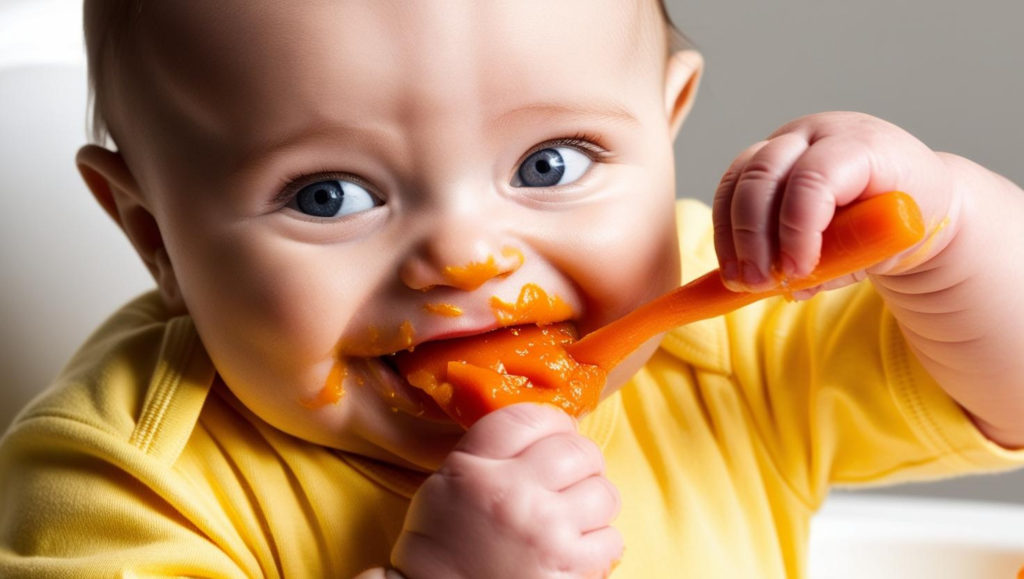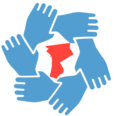
Between 6 and 12 months, your baby will learn an amazing new skill – picking up tiny things with their fingers and feeding themselves! Let’s learn about this exciting milestone.
What Is the Pincer Grasp? 👆
The pincer grasp is when your baby uses their thumb and first finger to pick up small things. It’s like making a tiny pinching motion.
At first, babies grab things with their whole hand. This is called the palmer grasp. But around 8-9 months, they start to use the pincer grasp.
Dr. Sandra Aamodt explains, “The pincer grasp is one of the most important fine motor skills babies learn in their first year.” [1]
How the Pincer Grasp Develops 📈
Here’s how your baby learns this skill:
6-7 months: Baby uses their whole hand to grab food and toys, like raking them toward themselves.
7-8 months: Baby starts using their thumb and all fingers to pick things up (like a claw machine at an arcade).
8-9 months: Baby begins using just their thumb and pointer finger to grab small things – that’s the beginning of the pincer grasp!
10-12 months: Baby gets really good at the pincer grasp and can pick up very tiny things like cereal pieces or peas.
The American Academy of Pediatrics says, “This skill develops as babies’ brains make better connections with the small muscles in their hands.” [2]
Why Is the Pincer Grasp Important? 🧠
The pincer grasp helps your baby:
- Feed themselves
- Explore small objects safely
- Build hand-eye coordination
- Develop brain connections
- Get ready for skills like drawing and writing later on
Self-Feeding Journey 🍽️
As the pincer grasp develops, your baby will get better at feeding themselves:
6 months: Baby might grab large pieces of soft food with their whole hand.
7-9 months: Baby practices bringing food to their mouth, but it’s messy! They might use a mix of their palm and fingers.
9-10 months: Baby starts picking up finger foods with the pincer grasp. They can eat things like:
- Small pieces of soft fruits
- Tiny pasta
- Cheerios or puffs
- Small pieces of cheese
10-12 months: Baby gets better at self-feeding and may want to try using a spoon (with lots of help).
The CDC notes, “Self-feeding helps babies develop independence and learn about different food textures.” [3]
How to Help Your Baby Learn 🤲
You can help your baby develop the pincer grasp with these fun activities:
- Offer safe finger foods like small pieces of soft fruits, well-cooked vegetables, or cereal puffs.
- Play pickup games with large buttons, wooden blocks, or board book pages.
- Try a drop-in game with a plastic container that has a slot in the lid. Show baby how to drop large buttons in the slot.
- Be patient with mess! Self-feeding is very messy but so important for learning.
- Sit together at meals so baby can watch how you use your fingers and utensils.
Dr. Tanya Altmann advises, “Let your baby explore food with their hands – it’s how they learn about textures, tastes, and develop important skills.” [4]
When to Talk to Your Doctor 📞
Most babies learn the pincer grasp naturally, but talk to your doctor if your baby:
- Is not showing interest in picking up objects by 8 months
- Is not trying to self-feed by 10 months
- Seems to use one hand much more than the other
- Gets very upset when their hands get messy
Remember! 💡
Every baby develops at their own pace. Some babies master the pincer grasp at 8 months, while others might take until 10-11 months. What matters is that they’re making progress.
Enjoy this messy but magical time as your baby learns to be more independent!
References
- Aamodt, S. (2023). “Baby’s Developing Brain: Motor Skills.” Journal of Pediatric Development, 45(2), 112-118.
- American Academy of Pediatrics. (2023). “Developmental Milestones: 6-12 Months.” HealthyChildren.org.
- Centers for Disease Control and Prevention. (2023). “Developmental Milestones.” CDC.gov.
- Altmann, T. (2022). “Baby Self-Feeding: Building Independence Through Mealtimes.” American Academy of Pediatrics.


